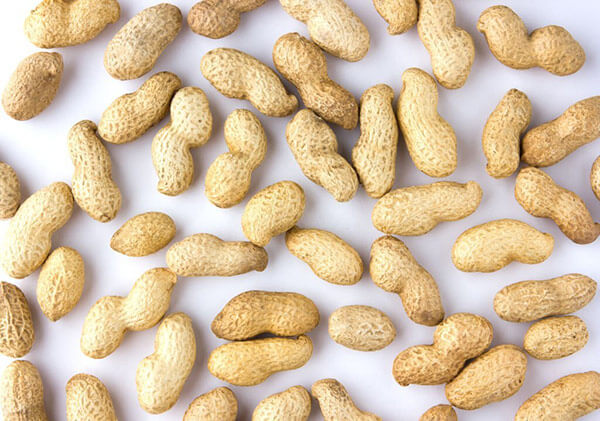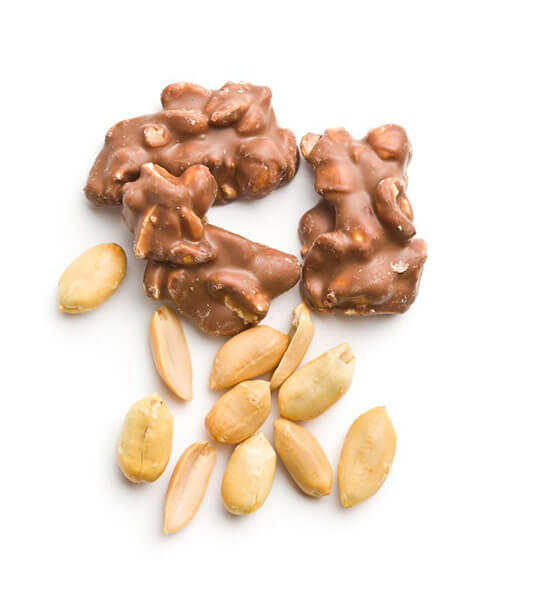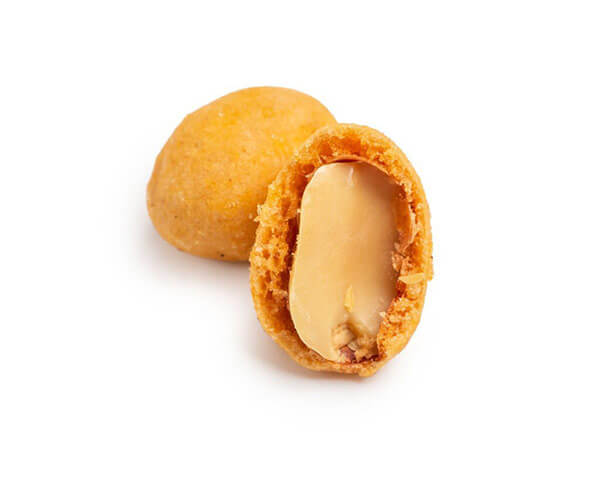


Abstract
Peanut is an important oilseed crop of tropical and sub-tropical area of the world. As a rich source of energy, vitamins and minerals, it has been accepted for table purpose as snacks in domestic and international market. The quality of seeds of sixty Spanish germplasm accessions of peanut were analyzed for their glucose, sucrose, raffinose family oligosaccharides (RFOs) and fatty acid profile. NRCG 14436 was identified for high sucrose, low glucose and low oil content; NRCG 14470 was identified for low RFOs, low glucose and high oil content, and high O/L ratio; while NRCG 14404 was identified for low RFOs, low glucose and low oil content. High O/L ratio (>2.0) was observed in accessions NRCG 14472 with high oil content. Thus, superior accessions identified for different traits would be useful for peanut breeders looking for germplasm containing high oil, low oil, low RFO, high sucrose, low glucose and high O/L ratio.
Introduction
Peanut (Arachis hypogaea), also known as groundnut, is the second most important cultivated grain legume and the fourth largest edible oilseed crop in the world (Shilman et al., 2011). Presence of large amount of free sucrose mainly contributes the sweetness (Mason et al., 1969). Further-more, sucrose, upon hydrolysis, produces fructose and glucose, which upon heating can react with some specific amino acids to form flavour components. The flavour of the roasted peanut plays an important role in its acceptance by consumers and other users (Grimm et al., 1996). Thus fatty acid composition and sucrose are considered as the major determinant of peanut quality (Nigam etal., 1989; Ajay et al., 2012).The RFOs are considered noxious components as they cause flatulence (Bryant et al., 2004) and glucose (along with free amino acids) causes discolouration upon roasting (Newell et al., 1967). Although, as an oilseed crop RFO are of no consequence but as an item of food it acquires importance. Since peanuts are continually utilized for preparation of new and improved products, a thorough knowledge of the composition and characteristics of the constituents of the peanut kernel is basic to improving the quality of peanut products for edible uses.
Spanish peanut varieties
| S. No | NRCG Code | ICG Code | Origin | S. No | NRCG Code | ICG Code | Origin |
|---|---|---|---|---|---|---|---|
| 1 | 14324 | 36 | India | 31 | 14411 | 6703 | Paraguay |
| 2 | 14326 | 81 | Unknown | 32 | 14414 | 6888 | Brazil |
| 3 | 14329 | 118 | India | 33 | 14420 | 7190 | Brazil |
| 4 | 14334 | 334 | China | 34 | 14422 | 7906 | Zimbabwe |
| 5 | 14335 | 397 | USA | 35 | 14423 | 7963 | USA |
| 6 | 14336 | 434 | USA | 36 | 14424 | 7969 | Zimbabwe |
| 7 | 14343 | 1137 | India | 37 | 14425 | 8083 | Russia |
| 8 | 14348 | 1711 | Bolivia | 38 | 14430 | 8567 | Urugay |
| 9 | 14349 | 1973 | India | 39 | 14433 | 9157 | Puerto Rico |
| 10 | 14350 | 2019 | India | 40 | 14434 | 9249 | Mauritius |
| 11 | 14350 | 2106 | India | 41 | 14436 | 9418 | Martinique |
| 12 | 14361 | 3102 | India | 42 | 14437 | 9507 | Philippines |
| 13 | 14362 | 3240 | Uganda | 43 | 14440 | 9809 | Mozambique |
| 14 | 14363 | 3343 | India | 44 | 14447 | 10384 | Nigeria |
| 15 | 14364 | 3421 | India | 45 | 14456 | 11249 | Tanzania |
| 16 | 14365 | 3584 | India | 46 | 14460 | 11515 | China |
| 17 | 14368 | 3746 | Argentina | 47 | 14461 | 11651 | China |
| 18 | 14377 | 4543 | Unknown | 48 | 14462 | 11687 | India |
| 19 | 14380 | 4684 | USA | 49 | 14465 | 12189 | Israel |
| 20 | 14381 | 4729 | China | 50 | 14470 | 12682 | India |
| 21 | 14383 | 4750 | Paraguay | 51 | 14471 | 12697 | India |
| 22 | 14384 | 4911 | Malawi | 52 | 14472 | 12879 | Myanmar |
| 23 | 14385 | 4955 | India | 53 | 14473 | 12921 | Zimbabwe |
| 24 | 14387 | 5195 | Sudan | 54 | 14474 | 12988 | India |
| 25 | 14389 | 5236 | Chile | 55 | 14476 | 13491 | Central African Republic |
| 26 | 14393 | 5494 | Mauritius | 56 | 14477 | 13603 | India |
| 27 | 14398 | 5779 | India | 57 | 14482 | 13982 | USA |
| 28 | 14398 | 6263 | Burkina | 58 | 14485 | 14118 | Italy |
| 29 | 14405 | 6375 | Unknown | 59 | 14485 | 14127 | Italy |
| 30 | 14407 | 6407 | Zimbabwe | 60 | 14493 | 14985 | Unknown |
Material and method
 Sixty Spanish peanut genotypes (Table 1) were raised at the farm of Directorate of Groundnut Research, Junagadh, Gujarat, India during Kharif-2011. Recommended agronomic practices were followed to raise a good crop. Although the crop was raised in rain-fed condition, supplementary irrigation was provided as and when required to avoid any water deficit stress. Sampling was made by selecting sound and mature kernels from the produce. During bio-chemical analysis, each sample was divided into three equal parts and analyzed separately as subsamples. For statistical analysis, each subsample was considered as replication to calculate standard deviation for each genotype.
Sixty Spanish peanut genotypes (Table 1) were raised at the farm of Directorate of Groundnut Research, Junagadh, Gujarat, India during Kharif-2011. Recommended agronomic practices were followed to raise a good crop. Although the crop was raised in rain-fed condition, supplementary irrigation was provided as and when required to avoid any water deficit stress. Sampling was made by selecting sound and mature kernels from the produce. During bio-chemical analysis, each sample was divided into three equal parts and analyzed separately as subsamples. For statistical analysis, each subsample was considered as replication to calculate standard deviation for each genotype.
Determination of oil content and O/L ratio
The samples were ground to fine meal and oil content was deter-mined by Soxhlet method as outlined by Misra et al. (2000). The fatty acid composition of oil was determined on a gas chromatograph by following the protocols described by Misra and Mathur (1998).
Determination of glucose, sucrose and RFOs contents
The saccharides from the defatted meal were extracted and quantified by the method described by Tahir et al. (2011) using a commercially available kit (Megazyme International Ireland Ltd., Bray, Ireland cat. no. K-RAFGL 05/2008).

Statistical analysis
Analysis of variance (ANOVA) was performed using DSAASTAT1.1 (Onofri, 2007) and correlation between different traits was studied using PAST v1.89 software (Hammer et al., 2001). Desirable genotypes containing higher amount of sucrose and oil content, and high O/L ratio were identified using formula 1, whereas geno types containing low RFOs, glucose and oil content were identified using formula 2.
Formula 1. Xi> Xp+ sd1+ sd2
Formula 2. Xi< Xp− sd1− sd2
Where Xi, mean of individual genotype; Xp, population mean; sd1,standard deviation of individual genotype; sd2, standard deviation of population.
Results and discussion
Peanut seeds of sixty Spanish germplasm accessions were studied for quality traits like sugars, oil and O/L ratio. Significant genotypic variations were observed among all the traits studied.
Variation in sugars
 Among the saccharides, sucrose accounted for the major fraction with a mean value of 4.6% in the range of 2.44–7.61%; the mean value of RFOs was 0.61% in the range of 0.17–1.56% while the mean value for glucose was 0.04% in the range of 0.01–0.11%. The maximum glucose content was observed in NRCG 14404 whereas it was minimum in NRCG 14436. As sucrose is the most abundant saccharide in peanut and it was maximum in NRCG 14350which was significantly different from other genotypes whereas NRCG 14465 had minimum concentration. There was a 3-folddifference in sucrose content between the genotypes containing maximum and minimum sucrose. The range of sucrose content in present study was similar to previous reports in peanut (Newellet al., 1967; Mason et al., 1969). The sweet attribute in peanut is a heritable trait (Pattee et al., 2000) and selection could be made for improving these traits.
Among the saccharides, sucrose accounted for the major fraction with a mean value of 4.6% in the range of 2.44–7.61%; the mean value of RFOs was 0.61% in the range of 0.17–1.56% while the mean value for glucose was 0.04% in the range of 0.01–0.11%. The maximum glucose content was observed in NRCG 14404 whereas it was minimum in NRCG 14436. As sucrose is the most abundant saccharide in peanut and it was maximum in NRCG 14350which was significantly different from other genotypes whereas NRCG 14465 had minimum concentration. There was a 3-folddifference in sucrose content between the genotypes containing maximum and minimum sucrose. The range of sucrose content in present study was similar to previous reports in peanut (Newellet al., 1967; Mason et al., 1969). The sweet attribute in peanut is a heritable trait (Pattee et al., 2000) and selection could be made for improving these traits.
Although sucrose is a constituent of RFOs, the correlation between the sucrose and RFOs content was non-significant indicating that the synthesis of RFOs in peanuts depends more on the enzymatic addition of galactose on sucrose moiety rather than availability of sucrose. Significant difference was also observed for raffinose content which ranged from 0.17(NRCG 14404) to 1.56% (NRCG 14434). Raffinose, stachyose and verbascose are major galactosyl-sucrose oligosaccharides (GSO) or raffinose family oligosaccharides (RFOs) in many food legumes (Shallenberger et al., 1967) and considered as anti-nutritional factor (Rackis, 1975). The lack of Alpha-galactosidase enzyme in humans and mono-gastric animals results in the undigested passage of RFO from the stomach into the large intestine. Raffinose family oligosaccharides undergo anaerobic hydrolysis by micro-flora in the large intestine, leading to production of carbon dioxide, hydrogen, and methane gases, which may cause abdominal discomfort, bloating and flatulence in humans (Tahir et al., 2012). A significant positive correlation of glucose was observed with sucrose which is obvious because glucose is one of the precursors of sucrose. In the present study, a significant positive correlation of sucrose was observed with linoleic acid and negative correlation with O/L ratio.
Conclusion
Among sixty Spanish peanut germplasm accessions, few genotypes were identified for certain important confectionery traits. The genotype NRCG 14470 (India) was identified for ‘low-RFOs, low-glucose, high-oil and high-O/L-ratio’ while NRCG14436 (Martinique) for high-sucrose, low-glucose and low-oil. Thus Indian Spanish was identified world’s best variety for confectionery use, while Martinique Java was 2nd best in the world.
Keywords
Groundnut, Sucrose, Glucose, RFO, Spanish, Java, Best variety of Java.
Reference
S.K. Bishi, Lokesh kumar, M.C. Dagla, M.K. Mahatma, A.L. Rathnakumar, H.B. Lalwani, J.B. Misra. Characterization of Spanish peanut germplasm (Arachis hypogaea L.)for sugar profiling and oil quality. Industrial Crops and Products 51 (2013) 46 – 50. 14 August 2013.
Ajay, B.C., Gowda, M.V.C., Rathkumar, A.L., Kusuma, V.P., Fiyaz, R.A., Holajjer, P., Babu,H.P., 2012. Improving genetic attributes of confectionary traits in peanut (Arachishypogaea L.) using multivariate analytical tools. J. Agric. Sci. 4 (3), 247–258.
Key Takeaways
• Indian origin Spanish or Java peanuts (NRCG 14470) is best in the world for confectionery application among other origins while Martinique Spanish (NRCG14436) is the second best.
• The genotype NRCG 14470 was identified for ‘low-RFOs, low-glucose, high-oil and high-O/L-ratio’.
• NRCG14436 (Martinique) for high-sucrose, low-glucose and low-oil.
